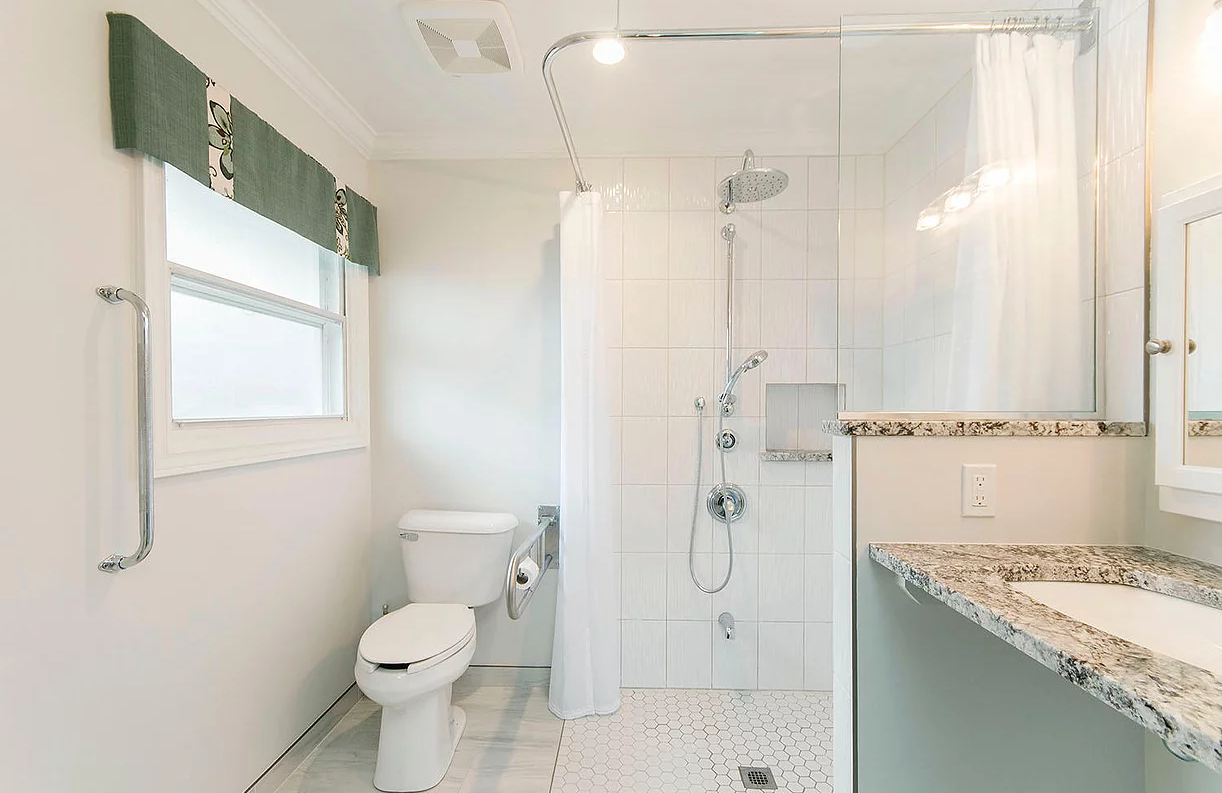A necessary part of accessible bathroom renovations is creating a shower or bath that meets everyone’s needs. The roll-in shower offers unrestricted access for people who use wheelchairs, seniors, and anyone with limited mobility.
What Is A Roll-In Shower?
 For those who have reduced mobility, bathing can be challenging; if the shower’s design doesn’t meet their needs, it can be dangerous. A roll-in shower makes bathing much more comfortable and safe. Roll-in showers let users in wheelchairs move directly into the bathing area in their chair, and it should be large enough for the wheelchair to maneuver within the stall.
For those who have reduced mobility, bathing can be challenging; if the shower’s design doesn’t meet their needs, it can be dangerous. A roll-in shower makes bathing much more comfortable and safe. Roll-in showers let users in wheelchairs move directly into the bathing area in their chair, and it should be large enough for the wheelchair to maneuver within the stall.
There are two types of roll-in shower designs. Standard designs are three-walled stalls with two side walls, one long back wall, and one long open entrance. They are at least 60 inches long and 30 inches deep, with bars on all walls that don’t have seats attached.
Alternate roll-in showers have a short wall at the shower’s entrance, with a seat behind it. They must also be 60 inches long with a minimum 36-inch depth, and grab bars may be on the back wall and the sidewall behind the front wall.
How Do We Design And Make Roll-In Showers?
Many users want their roll-in shower without a curb at the shower’s entrance so that it’s level with the bathroom floor. It allows wheelchairs to move into the shower without any difficulty. They can be built at an incline to keep the bathroom floor as dry as possible. Some users want to separate the floors, and they will request a roll-in shower with bevelled thresholds about 0.5″ high that the wheelchair can roll over.
We construct most roll-in showers using the same materials as other shower types. We can use fibreglass with a polyester gel coat or acrylic covering the walls and tub. Polyester gel coats can be sprayed on and cured, creating a uniform and consistent thickness throughout the shower.
The Accessibility Features In A Roll-In Shower
The entire shower must be designed and built for maximum accessibility; as such, they often include the following features:
 Grab bars should be in place, especially if there is a shower seat. We can install these features vertically, horizontally, or at an angle – whatever helps the user pull themselves up to stand or onto the shower seat or bench from the wheelchair.
Grab bars should be in place, especially if there is a shower seat. We can install these features vertically, horizontally, or at an angle – whatever helps the user pull themselves up to stand or onto the shower seat or bench from the wheelchair.- Showerheads should be mounted on height-adjustable verticle bars to accommodate people who can’t access certain heights. Showerheads in roll-in showers should also be handheld with a long enough hose for easy use.
- Shower seats or benches attached to the wall help users who prefer to take showers sitting down or must transfer out of their chair to shower. You can find models that fold up or down or free-standing seats that the user can store elsewhere when not in use.
Roll-in showers are excellent because they are a kind of accessibility renovation that everyone can use and enjoy without restriction. By trusting the job to a team that knows accessibility, you can renovate your bathroom to accommodate a roll-in shower with ease!


 Grab bars
Grab bars